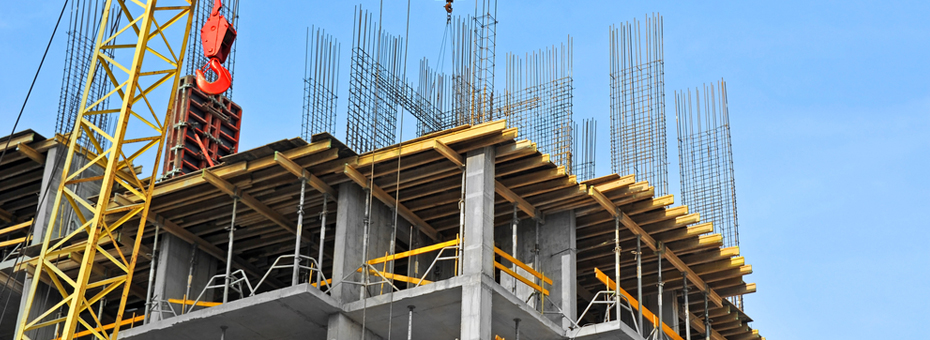Thinking of “building as a product” is a radically new way of looking at construction, or as an engineer, what I call the built environment. A building project, although it has many different moving parts and players, is a product. It’s a uniquely different product than a car, airplane, or toaster… it’s been around for few thousand years (in one form or another, with ad-hoc business practices making it possible)… but it’s still a product. And due to its own unique design and process challenges, it’s a product that desperately needs a better process for coming to be and sociotechnical system.
One of the big ideas of “building as product” in design and construction is to go beyond traditional practices of AEC (Architecture, Engineering and Construction) in the built environment and explore ideas in other industries to wholly transform AEC and ultimately, make a better product for people. In pursuit of a “better way,” AEC has discovered lean thinking and practice more than two decades ago. As an industry, as in many industries, our “translation” has been heavily focused on the adaptation of Toyota Production System (TPS). The powerful ideas, tools, and processes of TPS (pull planning, visual controls, 5S, supply chain integration, etc.) have indeed improved construction sites and produced more reliable and dependable production systems for construction operations. On a construction site (or any other manufacturing / assembly process), it is relatively easy to see the waste associated within the production batches – expensive inventory piles up, wasting resources, and hiding potential quality problem – and hence tackle these types of issues and problems. Yet, most construction operations and costs are driven by decisions upstream in product development driven either by the customer or supply chain. This is why AEC needs to shift its focus towards Lean Product and Process Development (LPPD) for better, cheaper, and faster buildings (products).
My first “aha! moment” as an engineer abotu this important shift of focus came in 2011 when I first read Morgan and Liker’s The Toyota Product Development System: Integrating People, Process And Technology. I was five years into my lean journey (and TPS adaptation to AEC similar to other construction professionals) and was struggling with translation of TPS to PD challenges. It was a big relief to read this: “TPS and PD had evolved quite distinctively and in separate organizational units within Toyota. Most Toyota product development managers claimed they had very limited knowledge of TPS, and Toyota engineers did not see TPS as the launching point for lean process in product development.”
So, I was not the first to fall into similar pitfalls! Still, I wanted to benchmark our current practices in the Cathedral Hill Hospital (CHH) project against the LPPD principles outlined by James Morgan and Jeffrey Liker. We documented our learnings and reflections in “Lean Product Development at Cathedral Hill Hospital Project” and in short, concluded that the management principles of TPS can be applied well beyond manufacturing. In summary, we observed that LPPD and TPS in AEC share basic principles and guidelines, but transformation in PD into a lean process is far more complex and less precise than transformation of manufacturing into a lean process. The main difference is in the nature of “flow”. In manufacturing, both the material and labor process is typically linear and unidirectional, from one station to the next. However, in product development, much of the PD flow is iterative, with data and information flowing back and forth in a complex web of tasks. This complex information flow gets even more complex at the organizational level as teams are connected remotely versus around a shop floor.
In such uncharted territories, AEC professionals need to have a strong sense of the “product” as a whole as well a solid foundation of systems thinking. They need to have a will to align all functional groups involved. So successful leaders in this space are those who dedicate a great deal of time, skill, and energy to understanding how individual parts and pieces work together and interact with the larger system upstream, as all of these things affect downstream manufacturing processes.
As a construction professional, I was initially skeptical of lean thinking. “Building as a Product” was more a question than an answer. After years of experimentation and practice, it has become a strong statement guiding my team. I rally behind this as the standard practice we use to guide us as we create custom solutions to our industry’s unique challenges and each project’s unique challenges. As AEC in the built environment goes through a wide variety of changes, I believe the core LPPD principles and Morgan and Liker’s framework that integrates “people, processes, and technology” are essential for better buildings and products.






A few days ago I sent a comment, rather a query. Would you have any problem with me publishing the translation of this article on our Lean Construction Blog?
Hi Gerardo — no problem. Just please attribute to Lean Enterprise Institute and lean.org.
Dear Sirs:
I find the content of this publication very interesting and I would like to know if there is no problem with you that I translate the article into Spanish and publish it in our Lean Construction Blog.
Thank you very much for the attention you give to this message and I look forward to your prompt response.